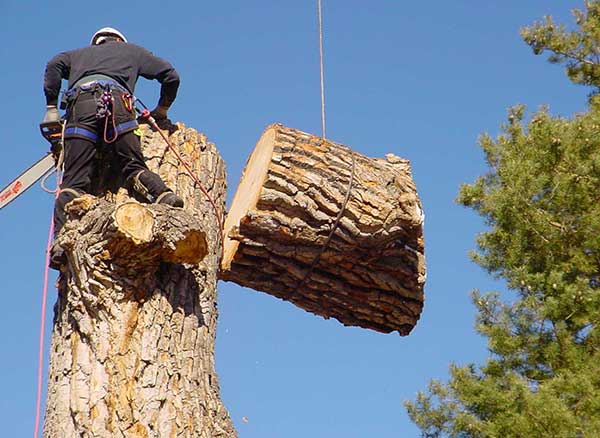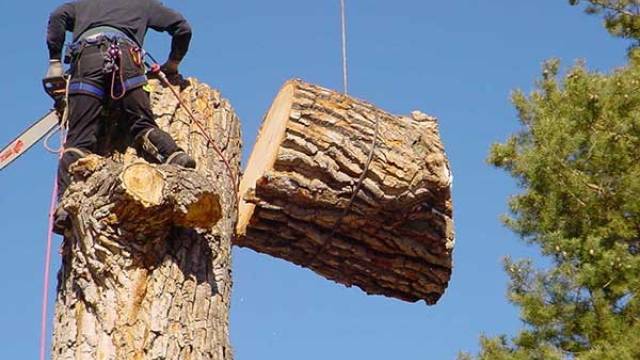When it comes to clearing space and creating a safe environment, the art and science of tree removal are essential skills to master. Whether it’s due to safety concerns, aesthetic reasons, or the need for new construction, the process of removing trees requires a delicate balance between artistry and scientific precision. With proper knowledge and techniques, tree removal can be executed efficiently and effectively.
Tree removal involves more than just chopping down a tree. It requires careful planning and consideration, ensuring the safety of both the professionals involved and the surrounding areas. Assessing the health and stability of a tree is crucial before starting the removal process. Factors such as decay, diseases, and structural integrity determine the complexity of the removal and the methods to be employed.
The art of tree removal lies in the hands of experienced arborists who possess the skill and expertise to create a strategic plan. From selecting the right equipment and tools to implementing techniques that minimize the impact on the environment, these professionals combine creativity and precision to achieve successful tree removals. At times, artistic solutions such as pruning or trimming can be employed to preserve the natural beauty of the surrounding landscape.
On the other hand, the science of tree removal relies heavily on the understanding of biology, physics, and engineering principles. Arborists must possess in-depth knowledge of tree anatomy, growth patterns, and the dynamics of forces involved in a removal. By thoroughly analyzing the tree’s structure and applying scientific principles, arborists can determine the most efficient and safest way to remove it.
In conclusion, the art and science of tree removal go hand in hand, bringing together creativity and technical expertise. By combining these elements, professionals in the field can master the skill of clearing space while preserving the beauty and environmental balance that trees provide.
Understanding Tree Removal
Tree removal is a necessary task when it comes to managing our outdoor spaces. Whether it is due to safety concerns, landscaping purposes, or the need for construction, the process of removing a tree requires careful planning and execution.
The first step in understanding tree removal is assessing the reasons for its necessity. Trees may need to be removed if they are damaged or diseased, posing a risk to people or property. Additionally, trees that are obstructing power lines or interfering with building projects may also need to be removed.
When it comes to the actual removal process, it is important to hire professionals who have the expertise and equipment required to safely and efficiently remove the tree. They will assess the tree’s size, location, and condition to determine the best approach. Utilizing specialized tools and equipment, they will carefully cut down the tree, ensuring that it falls in a controlled manner.

Once the tree has been felled, the professionals will then proceed to remove the remaining stump and roots, ensuring a complete removal. This may involve grinding the stump down or using chemical treatments to prevent regrowth.
Understanding the intricacies of tree removal is essential for anyone involved in outdoor space management. By recognizing the reasons behind tree removal and the steps involved in the process, we can ensure that our landscapes remain safe, functional, and aesthetically pleasing.
Safety Measures and Techniques
When it comes to tree removal, safety is paramount. Proper precautions and techniques must be followed to protect both the tree removal professionals and the surrounding property. Here we will discuss some essential safety measures and techniques that are employed in the art and science of tree removal.
-
Assessing the Site: Before any tree removal process begins, a thorough evaluation of the site is necessary. This includes determining the height, size, and condition of the tree, as well as assessing the surrounding area for any potential hazards such as nearby structures or power lines. By carefully examining the site, professionals can create a plan to ensure the safe removal of the tree without causing damage to property or injury to individuals.
-
Using Personal Protective Equipment: Tree removal involves working with heavy machinery and sharp tools, making it crucial for professionals to wear appropriate personal protective equipment (PPE). This typically includes items such as helmets, safety glasses, ear protection, gloves, and safety boots. These protective measures help minimize the risk of accidents or injuries during the tree removal process.
-
Employing Proper Tree Cutting Techniques: There are various tree cutting techniques utilized to ensure safe and controlled removal. Depending on the tree’s size, location, and condition, professionals may employ methods such as directional felling, which involves cutting the tree in a specific direction to control its fall. Additionally, cutting techniques like notching, backcutting, and hinge cutting are used to guide the tree’s direction of fall and reduce the risk of it falling unpredictably.
By understanding and implementing these safety measures and techniques, tree removal professionals can execute the task efficiently and safely. It is crucial to hire experienced and certified arborists or tree removal specialists who adhere to these practices to ensure the successful removal of trees while minimizing risks to both people and property.
Environmental Considerations
When it comes to tree removal, it is essential to take into account the environmental considerations. Removing trees can have both positive and negative impacts on our surroundings. Therefore, it is crucial to approach this task with careful planning and consideration of the potential consequences.
First and foremost, one of the main environmental factors to consider is the tree’s ecological role. Trees play a vital role in our ecosystem by providing oxygen, absorbing carbon dioxide, and providing habitat for various species. Removing trees from an area can disrupt this delicate balance and have a negative impact on the overall health of the environment.
Additionally, the removal of trees can lead to soil erosion. The roots of trees anchor the soil, preventing it from eroding during rainfall or strong winds. Without the trees’ stabilizing effects, erosion can occur, impacting the surrounding landscape and potentially causing problems such as sediment runoff into nearby water sources.
Lastly, tree removal can also affect the local climate. Trees provide shade, which helps to cool the surrounding area and reduce the heat island effect in urban environments. Removing trees can increase the temperature in the area and contribute to higher energy consumption for cooling purposes.
Considering these environmental factors is crucial before undertaking any tree removal project. By carefully evaluating the ecological role of the tree, the potential for soil erosion, and the impact on the local climate, we can make informed decisions that minimize any adverse effects on the environment.


